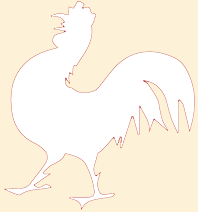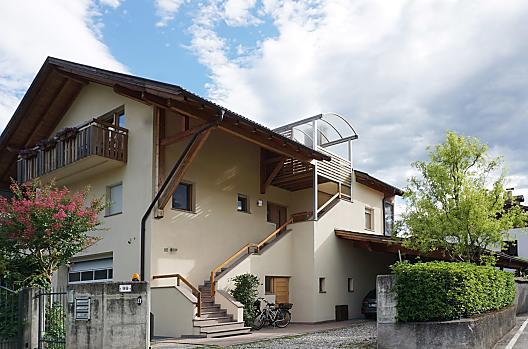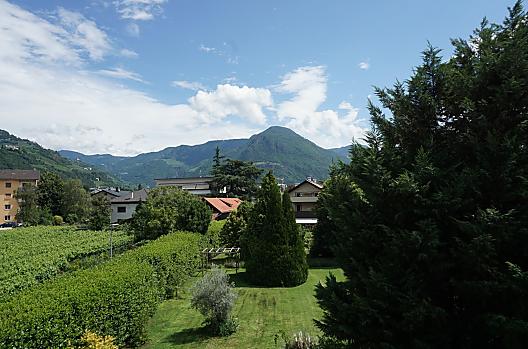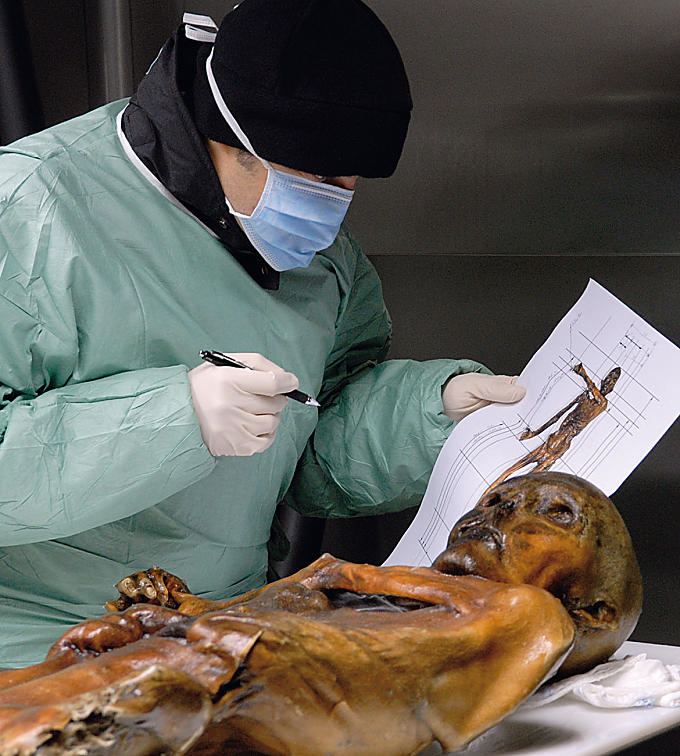
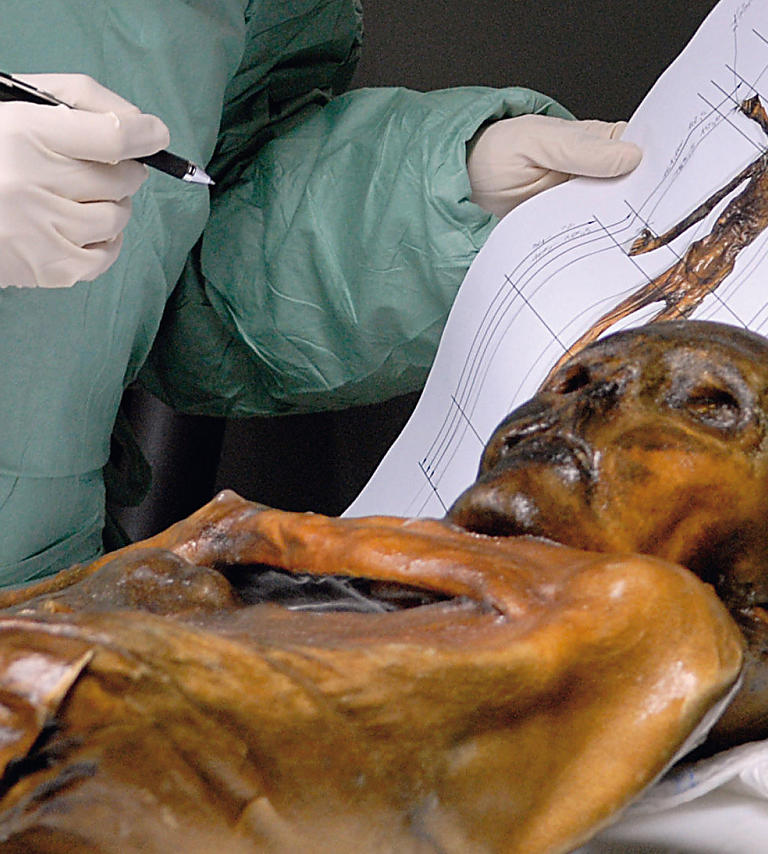
Day trip destination
South Tyrol Museum of Archaeology: the man from the ice
Probably the most famous person from South Tyrol - the oldest at any rate, at over 5,000 years old: Ötzi, the man from the ice in the South Tyrol Museum of Archaeology.
It is 19th September 1991. A married couple, Erika and Helmut Simon from Nuremberg, are hiking on 3,210-metre-high Tisenjoch peak in the Ötztal Alps, when they discover a brown object in a rocky gully. To their horror, they realise that it is a human corpse. They make a record of the discovery site with a photo and leave in distress, without a clue as to the sensation that they have just discovered.
A sensational discovery
A few days after the recovery of the glacier mummy, it became clear that the find is a few thousand years old. The C14 Carbon Dating Method confirmed that the man from the ice was alive between the years 3,350 and 3,100 before Christ and that the mummy was over 5,000 years old. This meant that it was one of the oldest mummies in the world. The glacier ice had freeze-dried it, so to speak, but the moisture in the mummy's cells had been preserved, allowing a series of scientific tests to be carried out. Research continues to this day.
After the discovery site near Hauslabjoch 93 metres from the Austrian border was declared to be on South Tyrolean soil, the man from the ice was taken to the newly-established South Tyrol Museum of Archaeology in Bozen on conclusion of archaeological investigations in Innsbruck in 1998.
Who was Ötzi?
Some extremely interesting items of equipment were found next to the mummy at the discovery site at Tisenjoch. The ice man had died unexpectedly and had not been buried like other intact mummies. He was wearing his everyday clothes and had his equipment with him, which is of great value for researchers. It allows insight into the past of the around 45-year-old man from the Copper Age. In the South Tyrol Museum of Archaeology, there is a permanent exhibition on Ötzi and his life displaying all associated finds. Visitors to the museum may not only admire the glacier mummy in its -6 °C cool chamber, but a completely intact copper axe, a dagger with flint blade, a half-made longbow and a quiver with arrows are on show, too.

The arrow head in the shoulder blade
In 2001, a radiologist made an exciting discovery: an arrow head made from flint was stuck in the mummy's left shoulder. In all probability, this was the injury that proved fatal for the man from the ice – a wound in his hand also points to close combat. Ten years after the discovery of the glacier mummy, it was clear that Ötzi did not die a natural death.
Discovering the Early Stone Age
The South Tyrol Musuem of Archaeology in Bozen is very popular thanks to its world-famous Ötzi. Adults and children can go on a fascinating voyage back in time, search for traces of the past and face new questions at every at every turn: who was the man from the ice? What do his 61 tattoos mean? What did his last meal consist of? You'll find the answers at the South Tyrol Museum of Archaeology.
Museum of Archaeology
Further information
The oldest glacier mummy in the world, Ötzi the Iceman, has found his last resting place at the South Tyrol Museum of Archaeology. Dating from the Copper Age (5,300 years old), he can been seen with his original clothing and equipment. Each year there are different special exhibitions on archaeological topics from South Tyrol to supplement the permanent display.


